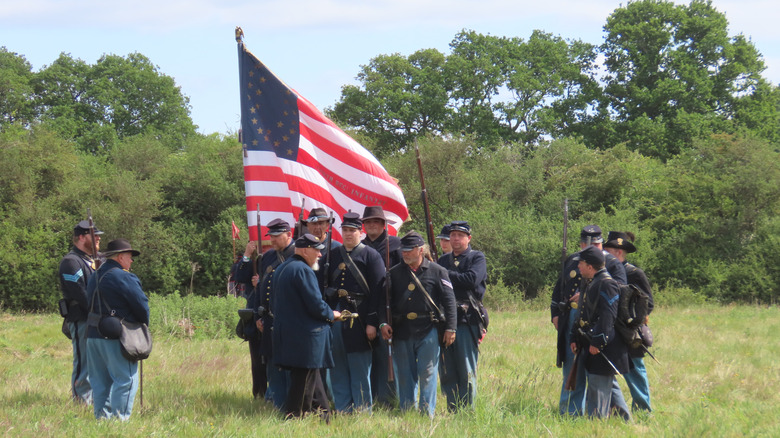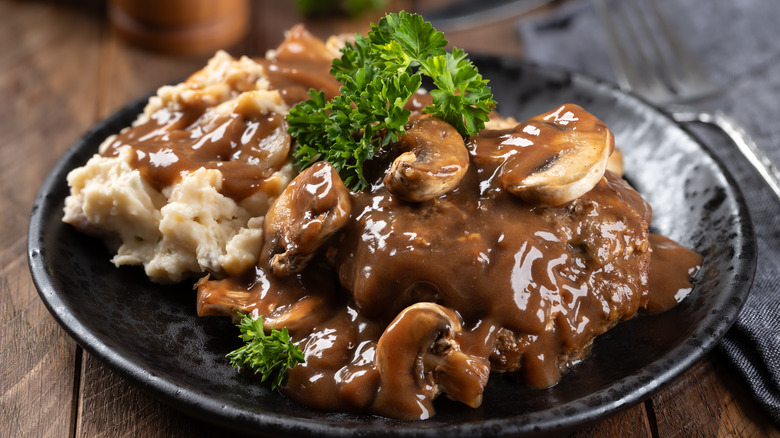This Classic Boomer Meal Has Roots In The American Civil War
Salisbury steak was a mainstay in diners and frozen dinners for decades, giving countless Americans an easy, tasty, and protein-rich dinner and featuring on many tables for Boomer kids and adults. But the history of Salisbury steak goes back further than you may think ... all the way to the American Civil War, in fact. This old-school diner food may not be so popular anymore, but at the time, it was a welcome sight for multiple reasons.
Salisbury steak was invented by Dr. James Salisbury, a New York physician and researcher who was an early proponent of germ theory and dietary science. He believed that diseases were largely caused by the food people ate and that the healthiest diet was high in meats and low in vegetables. During the American Civil War, soldiers suffered extensively from digestive diseases like dysentery, which claimed tens of thousands of lives, making it one of the top killers of the war. In order to fight the military's digestive woes, Salisbury recommended a broiled "muscle pulp of beef" that would later come to be known as his signature creation, Salisbury steak.
In addition to his theories on stopping wartime disease, Salisbury conducted several nutrition-based experiments, like single-food diets where he and a few other men ate only one food for weeks at a time. Not all of his theories were hits, such as his notion that vegetables fermented and produced toxic materials in the stomach. Still, given the time, Salisbury's work was fairly groundbreaking, and his namesake meal certainly lived on for future generations.
Did Salisbury steak actually cure anyone?
So, did Dr. Salisbury's miracle cure help the ailing soldiers? Kind of. The results of Salisbury steak's debut are largely unknown, but it would appear that soldiers at least saw some improvement eating the meal. However, those results were likely not for the reasons Salisbury imagined. Today, we know that an all-meat diet, even if we choose the best steaks available, carries many risks like nutritional deficiencies, cardiovascular issues, and, ironically, digestive problems such as constipation (which may be partially why soldiers saw improvement when so many suffered from dysentery).
One of the biggest reasons for the success of Salisbury's new diet was hardtack. Hardtack was a Civil War staple typically made from only bread and flour (and perhaps a bit of salt if you were lucky). It lasted for an incredibly long time but was also incredibly unpleasant to eat and had little to no nutritional value. Salisbury's new diet added a nutritional boost that soldiers were dearly lacking up to that point, even if they still didn't get everything they needed.
Another factor was bacteria. Broiling the Salisbury steak killed many disease-causing pathogens, so the soldiers who ate the meal perhaps weren't being exposed to as many microbes that could cause illness. Soldiers would also often scavenge for things like fruits and edible mushroom varieties, which likely also carried risks of poisoning and illness. Cutting out at least some scavenged food likely helped soldiers avoid getting sick due to bacteria or poisonous plant compounds.

